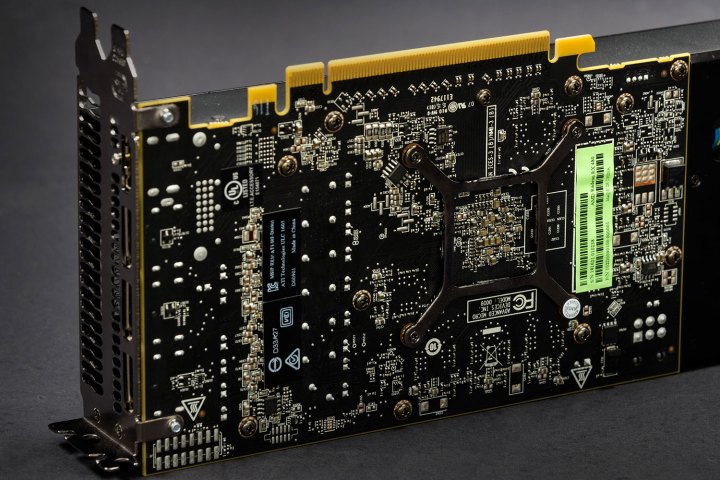
“Although we are confident that the levels of reported power draws by the Radeon RX 480 do not pose a risk of damage to motherboards or other PC components based on expected usage, we are serious about addressing this topic and allaying outstanding concerns,” the company told Digital Trends. “Toward that end, we assembled a worldwide team this past weekend to investigate and develop a driver update to improve the power draw.”
According to the company, the power draw fix will be unleashed in Radeon Software 16.7.1, which is currently in the testing phase and will be launched to the public sometime within the next 48 hours. While this change will lower the current drawn from the PCI Express bus, the updated software will also provide a toggle for reducing the card’s total power draw with minimal performance impact. This option will be located in the software’s Global Settings menu.
“We’ve implemented a collection of performance improvements for the Polaris architecture that yield performance uplifts in popular game titles of up to 3 percent,” AMD added. “These optimizations are designed to improve the performance of the Radeon RX 480, and should substantially offset the performance impact for users who choose to activate the ‘compatibility’ toggle.”
The 8GB and 4GB versions of the Radeon RX 480 — two new graphics cards from AMD aimed at expanding the market for affordable, high-performance VR gaming — launched on June 29. Prior to their launch, the company released kits for well-respectable sites (cough Digital Trends cough) to check out the new card’s performance using both on-board memory capacities.
That said, the Radeon RX 480 is rated as a 150-watt card, but during close examination it was discovered to actually pull 168-watts under load. For a better understanding, graphics cards typically pull power from its designated slot on the motherboard up to 75 watts, and through a separate six-pin PCI Express power connector with a 75-watt limit. In this case, the card yanked up to 95 watts from the PCI Express slot alone, which the official PCI Express specs simply don’t allow.
As an example, PC Perspective recently watched the Radeon RX 480 spike up to 165 watts of power in several instances when running The Witcher 3: Wild Hunt. Ninety-five watts were pulled from the PCI Express slot alone while the slot’s +12V rail, which has a maximum current draw of 5.5 amps, experienced a draw of seven amps from the installed AMD card. Thankfully, AMD has set out to resolve this issue, and is doing so rather quick.
“AMD is committed to delivering high quality and high performance products, and we’ll continue to provide users with more control over their product’s performance and efficiency,” the company told Digital Trends. “We appreciate all the feedback so far, and we’ll continue to bring further performance and performance/W optimizations to the Radeon RX 480.”
As AMD points out, motherboards and system components likely won’t go nuclear and turn customers into mutants because of the card’s current power draw. However, the PCI-SIG injected the PCI Express specifications with limits for a good reason. AMD is part of that PCI-SIG conglomerate of companies, so the problem of its cards pulling too much power from the PCI Express slot is a little surprising.
Regardless of the current power draw, we loved the Radeon RX 480, and you can see why by checking out our review here.
Editors' Recommendations
- Nvidia GeForce RTX 4070 vs. AMD Radeon RX 6950 XT: a close call
- AMD Radeon RX 7000 series: Everything we know about the RDNA 3 GPU
- This new leak spells bad news for AMD Radeon RX 7000
- New AMD RX 6500 XT: 3 graphics cards you should buy instead
- AMD’s 8 new Radeon GPUs might finally rival Nvidia in gaming laptops


